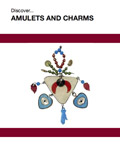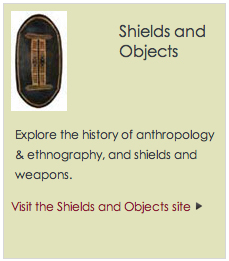Amulets and Charms Introductory Guide
Introduction
The Pitt Rivers Museum has almost 6,000 amulets and charms in its collections; though not all of them are on display. They have been collected from all over the world, including England, and demonstrate the wide array of methods for using magic employed by different cultures.
An amulet is defined by the Oxford English Dictionary as: ‘Anything worn about the person as a charm preventative against evil, mischief, disease, witchcraft, etc.’ The definition of charm is very similar: ‘Anything worn about the person to avert evil or ensure prosperity’, though a charm may also be a spell or incantation believed to have a magical power.
Some of the objects on display are technically not amulets or charms but objects that were used in a ritual or instilled with a supernatural power. Some have been taken directly from the natural environment, and assigned a magical function by a single person, while others have been carved or painted to create an object with a meaning that would be recognised by most members of the culture.
The underlying theme that unites all amulets and charms is that the people who created and used them believed in them; almost any object may become a charm or an amulet, so long as someone believes it has the power to affect or alter the world around them.
Some amulets and charms are examples of ‘sympathetic magic’, which generally means that the appearance of an object resembles, in some way, the cure or protection it is believed to offer.
Unlike some of the objects on display in this Museum, amulets and charms are still widely used in many cultures today. You may have an object yourself that you trust will bring you luck! The amulets and charms on display at the Pitt Rivers Museum are material evidence of the hopes and beliefs that are shared by all of humankind.
 Continue reading the Pitt Rivers Museum Introductory Guide to Amulets and Charms
Continue reading the Pitt Rivers Museum Introductory Guide to Amulets and Charms
Download pdf version (to view pdf files Acrobat Reader is required)






